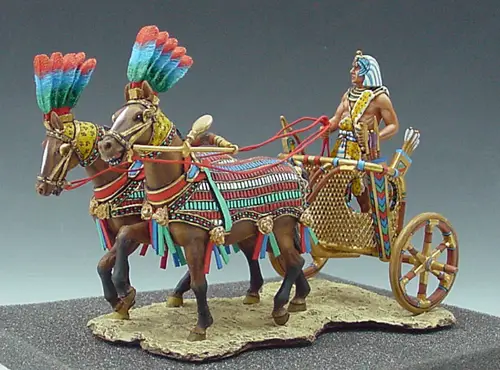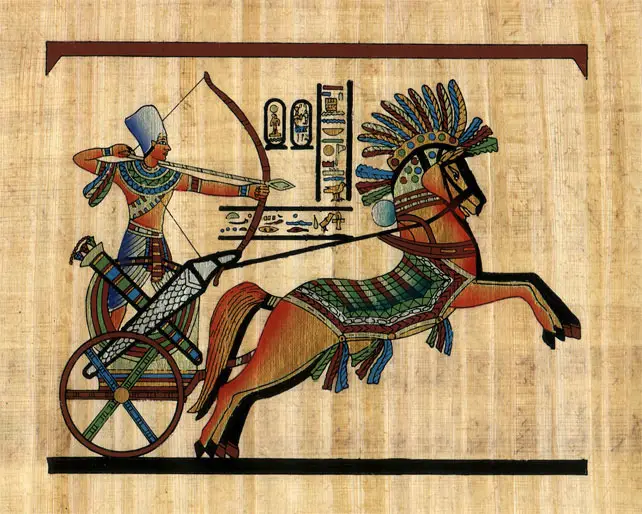It is the Hyksos that is credited with introducing the Egyptian Chariots to Egypt when they took control of lower Egypt around the middle of the 17th century BCE, and when they were expelled in the following century Egypt kept and developed this innovation.
Initially, they were Canaanite in style, being exceptionally light and used mostly as mobile archery platforms, with a crew of two – a driver/shield-bearer and a warrior. During the reign of Tuthmosis IV, the crew began using more Armour and the cab became a little heavier.

The chariot in Egypt quickly became the transport of the elite, whether for war, religion or affairs of state, though the humble donkey remained an important and dignified mode of transport until the introduction of the horse.
It was this development that gave the real impetus to the chariot, which now became an even greater weapon, combining high speed, strength, durability, and mobility that could not be matched by infantry.
Design of Egyptian Chariots

Some analysis of ancient Egyptian Chariots provides that the Egyptians greatly improved the design of this vehicle. The Egyptian chariot had a metal covering for the axes, which reduced friction, and this was certainly an improvement. Also, some wooden parts were strengthened by covering them with metal sleeves. The most obvious changes were the adoption of six spokes in the wheel (previously they had used four), and the increasing use of protection for the horses.

In Egypt, war Egyptian Chariots were manned by a driver holding a whip and the reigns and a fighter, generally wielding a bow or, after spending all his arrows, a short spear of which he had a few.
When hunting, the pharaohs would sometimes dispense with the driver and enjoy chasing after their prey on their own. However, in warfare, chariot runners would also usually accompany the vehicle into battle. After the chariot was constructed, considerable work was needed in order to maintain the vehicle in good working order.
Hence, the chariot was of paramount social and political significance since it heralded the appearance of the chariot corps which consisted of a new aristocratic warrior class modeled on the ubiquitous Asiatic military elite known to the Egyptians as the maryannu (young heroes).
The depiction of the triumphant New Kingdom pharaoh as a charioteer shows that the chariot was quickly absorbed into the royal regalia, becoming a powerful symbol of domination. Interestingly, the royal chariot itself was treated as a heroic personality with gods overseeing each of its named parts.